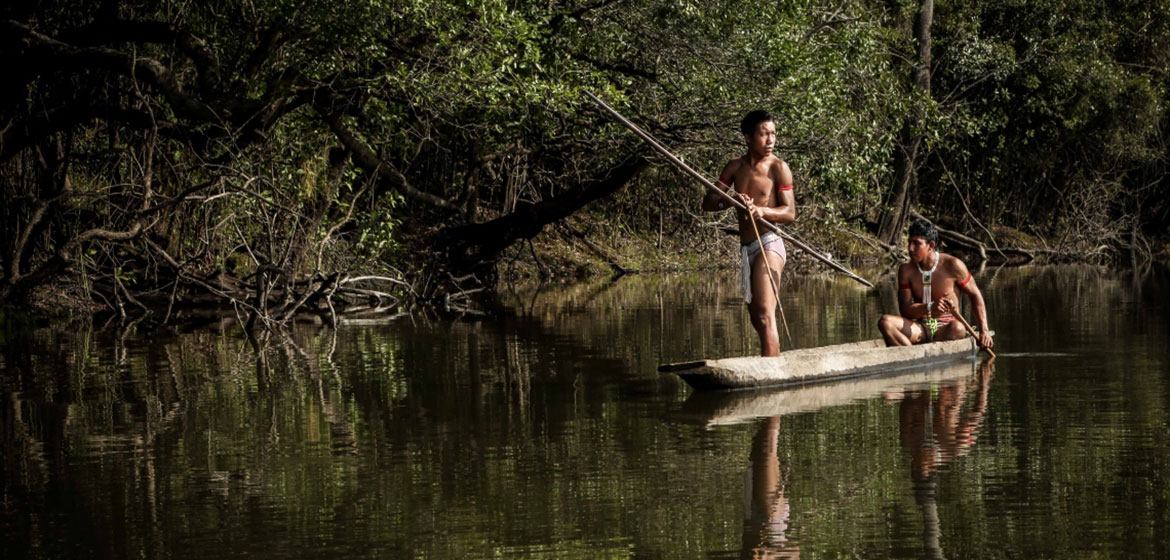By Wael Zakout and Andy White
This insecurity undermines global efforts to protect, sustainably manage, and restore ecosystems essential to the realization of global climate, biodiversity, and sustainable development goals.
While there is growing acceptance of the importance of land rights, those of millions of local communities and Indigenous Peoples – who customarily hold and use land through community arrangements as opposed to individual land ownership – are often overlooked. These communities have long stewarded many of the world’s great forests and biodiversity hotspots.
shows that lands managed by local peoples with secure rights experience , , hold more , and benefit more people than lands managed by either public or private entities.
Yet legal recognition of their rights continues to lag, with communities only having legal ownership to of the world’s lands.
This insecurity renders these local communities – and the forests and biodiversity hotspots they protect – vulnerable to the economic pressures that drive deforestation worldwide. This gap in legal recognition is also a significant driver of conflict – an of over 70,000 concession areas in eight tropical forest countries found that more than 93 percent were already inhabited.
The are primarily driven by the displacement of local peoples, destruction of the environment they rely on, and a shortage of resources.
The rights of the living within these communities are particularly likely to lack adequate legal protection, despite their role as the primary forest managers and food providers.
Scaling up efforts to close the gap in rights recognition for Indigenous Peoples and local communities represents the world’s single greatest opportunity – in terms of land coverage, number of people affected, and contested areas—to advance global climate, biodiversity and development goals. Getting this recognition is also necessary for protecting human rights and women’s rights.
Fortunately, there has been significant progress on this front. In 2002, only 40 countries had legal frameworks recognizing communities and Indigenous Peoples as forest owners or designated rightsholders. By 2017, had adopted similar laws, establishing new pathways for community forest ownership.
And by simply implementing existing legislation in four countries, Colombia, Indonesia, India, and the Democratic Republic of the Congo, the world could exceed the gains made in the last 15 years.
So, how do we seize this critical opportunity?
Until community land rights are fully realized, local peoples’ culture and livelihoods – and the protection of the forests, lands, water, biodiversity, and climate necessary for human survival – remain fragile at best. Tipping the scales of change, while possible, will require:
- Greater global ambition and coordination toward recognizing Indigenous Peoples’ and local communities’ land and forest rights. There is a need to make the policy and financial commitments that match the scale and scope of the challenges before us and hold ourselves and each other in the development community accountable, requiring new mechanisms for enhancing coordination, prioritization, and monitoring of global efforts.
- Expanding the number of countries with the “enabling environments” necessary to scale up land rights recognition. To formally secure and maintain land rights for Indigenous Peoples and local communities, countries must first have adequate legal frameworks to recognize Indigenous Peoples’ and communities’ land rights. This requires political will to pass the laws, and capacity to implement these laws once adopted.
- Mobilizing increased investments toward implementation. The international community and donor organizations need to provide the necessary technical assistance to help countries assess and prepare the legal mechanism, including laws and regulations to protect Indigenous Peoples and communities’ land rights; they should also provide financing toward implementation once the legal framework is in place. This support should be built on the experience gained by the , and new funding mechanisms should be considered.
The progress to date on local communities’ and Indigenous Peoples’ rights recognition speaks to the tireless efforts of communities and their supporters.
To do so, the development community needs to think bigger, work across silos, and establish the mechanisms to mobilize the ambition and funding necessary to secure rights of the local people who play a critical role in the care and management of the forest and biodiversity resources on which humanity depends.
Source:
Related to SDG 10: Reduced inequalities, SDG 17: Partnership for the goals and SDG 16: Peace, justice and strong institutions



